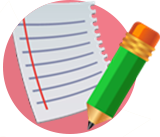Monetary Policy and Bank Regulation
15.1 Marriner S. Eccles Federal Reserve Headquarters, Washington D.C.
- Some of the most influential decisions regarding monetary policy in the United States are made behind these doors.
(Credit: modification of work by “squirrel83”/Flickr Creative Commons)
15.1 The Federal Reserve Banking System and Central Banks
- Central bank – the organization responsible for conducting monetary policy and ensuring that a nation’s financial system operates smoothly.
- In the U.S. the central bank is the Federal Reserve (“the Fed”).
- Semi-decentralized, mixing government appointees with representation from private-sector banks.
- Run by a Board of Governors, consisting of seven members appointed by the President of the United States and confirmed by the Senate.
Chair of the Federal Reserve Board
- Janet L. Yellen is the first woman to hold the position of Chair of the Federal Reserve Board of Governors. (Credit: Board of Governors of the Federal Reserve System)
- While the Chair of the Federal Reserve has only one vote, they control the agenda, and is the Fed’s public voice.
The Twelve Federal Reserve Districts
- The Federal Reserve is more than the Board of Governors.
- The Fed also includes 12 regional Federal Reserve banks, each of which is responsible for supporting the commercial banks and economy generally in its district.
What Does a Central Bank Do?
- The Federal Reserve is designed to perform three important functions:
- To conduct monetary policy
- To promote stability of the financial system
- To provide banking services to commercial banks and other depository institutions, and to provide banking services to the federal government.
15.2 Bank Regulation
- Bank regulation is intended to maintain banks’ solvency by avoiding excessive risk.
- Regulation falls into a number of categories:
- reserve requirements
- capital requirements
- restrictions on the types of investments banks may make.
- Regulation requires that banks maintain a minimum net worth, usually expressed as a percent of their assets, to protect their depositors and other creditors.
Bank Supervision
- Several government agencies monitor banks’ balance sheets to make sure they have positive net worth and are not taking too high a level of risk.
- Office of the Comptroller of the Currency (is within the U.S. Department of the Treasury)
- National Credit Union Administration (NCUA)
- The Federal Reserve
A Run on the Bank
Bank run – when depositors race to the bank to withdraw their deposits for fear that otherwise they would be lost.
- Bank runs during the Great Depression only served to worsen the economic situation. (Credit: National Archives and Records Administration)
Deposit Insurance and Lender of Last Resort
- The risk of bank runs can create instability in the banking system.
- To protect against bank runs, Congress has put two strategies into place:
- Deposit insurance – an insurance system that makes sure depositors in a bank do not lose their money, even if the bank goes bankrupt.
- Banks pay an insurance premium to the Federal Deposit Insurance Corporation (FDIC).
- Lender of last resort – an institution that provides short-term emergency loans in conditions of financial crisis.
- Deposit insurance – an insurance system that makes sure depositors in a bank do not lose their money, even if the bank goes bankrupt.
15.3 How a Central Bank Executes Monetary Policy
- The Federal Reserve’s most important function is to conduct the nation’s monetary policy.
- Monetary policy involves managing interest rates and credit conditions, which influences the level of economic activity.
- The most common monetary policy tool in the U.S. is
- Open market operations – the central bank selling or buying Treasury bonds to influence the quantity of money and the level of interest rates.
- Federal Open Market Committee (FOMC) – makes the decisions regarding open market operations, and is comprised of 7 members of the Federal Reserve’s Board of Governors and 5 voting members from the regional Federal Reserve Banks.
How Open Market Operations Increase the Money Supply
- (a) shows that Happy Bank starts with $460 million in assets, divided among reserves, bonds and loans, and $400 million in liabilities in the form of deposits, with a net worth of $60 million.
- (b) shows when the central bank purchases $20 million in bonds from Happy Bank, the bond holdings of Happy Bank fall by $20 million and the bank’s reserves rise by $20 million.
- However, Happy Bank only wants to hold $40 million in reserves (the quantity of reserves with which it started),
- So, (c) shows the bank loans out the extra $20 million in reserves and its loans rise by $20 million.
- The central bank’s open market operation causes an expansion of the money supply.
How Open Market Operations Decrease the Money Supply
- (a) shows the balance sheet of Happy Bank before the central bank sells bonds in the open market.
- (b) shows when Happy Bank purchases $30 million in bonds, Happy Bank sends $30 million of its reserves to the central bank, but now holds an additional $30 million in bonds.
- However, (c) shows that Happy Bank wants to hold $40 million in reserves, so it will adjust down the quantity of its loans by $30 million, to bring its reserves back to the desired level.
- A bank can easily reduce its quantity of loans by slowing down or briefly stopping to make new loans.
- This operation causes the money supply to decrease.
Changing Reserve Requirements
- A second method of conducting monetary policy is for the central bank to raise or lower the reserve requirement.
- Reserve requirement – the percentage of each bank’s deposits that it is legally required to hold either as cash in their vault or on deposit with the central bank.
- Greater reserve requirement = less money available to lend out.
- Smaller reserve requirement = greater amount of money available to lend out.
- In practice, the Fed rarely uses large changes in reserve requirements to execute monetary policy.
Changing the Discount Rate
- The third traditional method for conducting monetary policy is to raise or lower the discount rate.
- Discount rate – the interest rate charged by the central bank on the loans that it gives to other commercial banks.
- If the central bank raises the discount rate, than commercial banks will reduce their borrowing of reserves from the Fed, and instead call in loans to replace those reserves.
- Since fewer loans are available, the money supply falls and market interest rates rise.
- If the central bank lowers the discount rate it charges to banks, the process works in reverse.
15.4 Monetary Policy and Economic Outcomes
- Expansionary monetary policy or loose monetary policy – a monetary policy that increases the supply of money and the quantity of loans.
- Contractionary monetary policy or tight monetary policy – a monetary policy that reduces the supply of money and loans
The Effect of Monetary Policy on Interest Rates
- Federal funds rate – the interest rate at which one bank lends funds to another bank overnight.
- How does a central bank “raise” interest rates?
- Through open market operations the central bank changes bank reserves in a way which affects the supply curve of loanable funds.
- The Federal Reserve has, since 1995, established its target federal funds rate in advance of any open market operations.
- If open market operations do not meet the Fed’s target, the Fed can supply more or less reserves until interest rates do.
Monetary Policy and Interest Rates
- The original equilibrium occurs at E0.
- An expansionary monetary policy will shift the supply of loanable funds to the right from the original supply curve (S0) to the new supply curve (S1) and to a new equilibrium of E1, reducing the interest rate from 8% to 6%.
- A contractionary monetary policy will shift the supply of loanable funds to the left from the original supply curve (S0) to the new supply (S2), and raise the interest rate from 8% to 10%.
The Effect of Monetary Policy on Aggregate Demand
- Monetary policy affects interest rates and the available quantity of loanable funds, which in turn affects several components of aggregate demand.
- Tight or contractionary monetary policy will reduce two components of aggregate demand:
- Business investment (declines because it is less attractive for firms to borrow money).
- Consumer borrowing for big-ticket items.
- Conversely, loose or expansionary monetary policy will tend to increase business investment and consumer borrowing for big-ticket items.
Expansionary or Contractionary Monetary Policy
- In (a), the economy is originally in a recession with the equilibrium output and price shown at E0.
- Expansionary monetary policy will reduce interest rates and shift aggregate demand to the right from AD0 to AD1,
- This leads to the new equilibrium (E1) at the potential GDP level of output with a relatively small rise in the price level.
- In (b), the economy is originally producing above the potential GDP level of output at the equilibrium E0 and is experiencing pressures for an inflationary rise in the price level.
- Contractionary monetary policy will shift aggregate demand to the left from AD0 to AD1,
- This leads to a new equilibrium (E1) at the potential GDP level of output.
Countercyclical
- Monetary policy should be countercyclical.
- Countercyclical – moving in the opposite direction of the business cycle of economic downturns and upswings
The Pathways of Monetary Policy
- For (a), in expansionary monetary policy the central bank causes the supply of money and loanable funds (M) to increase, which lowers the interest rate (r), stimulating additional borrowing for investment (I) and consumption (C), and shifting aggregate demand right.
- The result is a higher price level (P) and, at least in the short run, higher real GDP.
- For (b), in contractionary monetary policy, the central bank causes the supply of money (M) and credit in the economy to decrease, which raises the interest rate (r), discouraging borrowing for investment (I) and consumption (C), and shifting aggregate demand left.
- The result is a lower price level (P) and, at least in the short run, lower real GDP.
Federal Reserve Actions Over Last Four Decades
- Through the episodes here, the Federal Reserve typically reacted,
- to higher inflation – with a contractionary monetary policy and a higher interest rate.
- to higher unemployment – with an expansionary monetary policy and a lower interest rate.
Quantitative Easing
- Quantitative easing (QE) – the purchase of long term government and private mortgage-backed securities by central banks to make credit available in hopes of stimulating aggregate demand.
- Used in the 2008 recession.
- Quantitative easing differs from traditional monetary policy in several key ways:
- The Fed purchasing long term Treasury bonds, rather than short term Treasury bills.
- Instead of purchasing Treasury securities, the Fed also began purchasing private mortgage-backed securities.
15.5 Pitfalls for Monetary Policy
- Banks are legally required to hold a minimum level of reserves, but no rule prohibits them from holding additional excess reserves.
- Excess reserves – reserves banks hold that exceed the legally mandated limit.
- Velocity – the speed with which money circulates through the economy.
Velocity = nominal GDP
money supply
Unpredictable Movements of Velocity
- Rewrite the definition of velocity so that the money supply is on the left-hand side of the equation. This is called the basic quantity equation of money:
Money supply × velocity = Nominal GDP
- Recall that:
Nominal GDP = Price Level (or GDP Deflator) × Real GDP
- Therefore,
Money Supply × velocity = Price Level × Real GDP
- Looking at this equation, we see that changes in velocity can cause problems for monetary policy.
Velocity Calculated Using M1
- Velocity is the nominal GDP divided by the money supply for a given year.
- We can calculate different measures of velocity by using different measures of the money supply.
- Velocity, as calculated by using M1 money supply, has lacked a steady trend since the 1980s, instead bouncing up and down. (credit: Federal Reserve Bank of St. Louis)
Unemployment and Inflation
- Most central bankers believe that the primary task of monetary policy should be fighting inflation.
- This vision of focusing monetary policy on a low rate of inflation is so attractive that many countries have rewritten their central banking laws since the 1990s to have their bank practice inflation targeting.
- Inflation targeting – a rule that the central bank is required to focus only on keeping inflation low.
- Economists have no final consensus on whether a central bank should be required to focus only on inflation or should have greater discretion.
Monetary Policy in a Neoclassical Model
- In a neoclassical view, monetary policy affects only the price level, not the level of output in the economy.
- For example, an expansionary monetary policy causes aggregate demand to shift from the original AD0 to AD1.
- However, the adjustment of the economy from the original equilibrium (E0) to the new equilibrium (E1) represents an inflationary increase in the price level from P0 to P1, but has no effect in the long run on output or the unemployment rate.
- In fact, no shift in AD will affect the equilibrium quantity of output in this model.

Economics Homework
Stuck with a homework question? Find quick answer to Economics homeworks

Ask Economics Tutors
Need help understanding a concept? Ask our Economics tutors

Economics Exams
Get access to our databanks of Discussion questions and Exam questions
How We Safeguard Your Tutor Quality
All tutors are required to have relevant training and expertise in their specific fields before they are hired. Only qualified and experienced tutors can join our team
All tutors must pass our lengthy tests and complete intensive interview and selection process before they are accepted in our team
Prior to assisting our clients, tutors must complete comprehensive trainings and seminars to ensure they can adequately perform their functions
Interested in becoming a tutor with Online Class Ready?
Share your knowledge and make money doing it
1. Be your own boss
2. Work from home
3. Set your own schedule

Economics 102 – Principles of Macroeconomics

